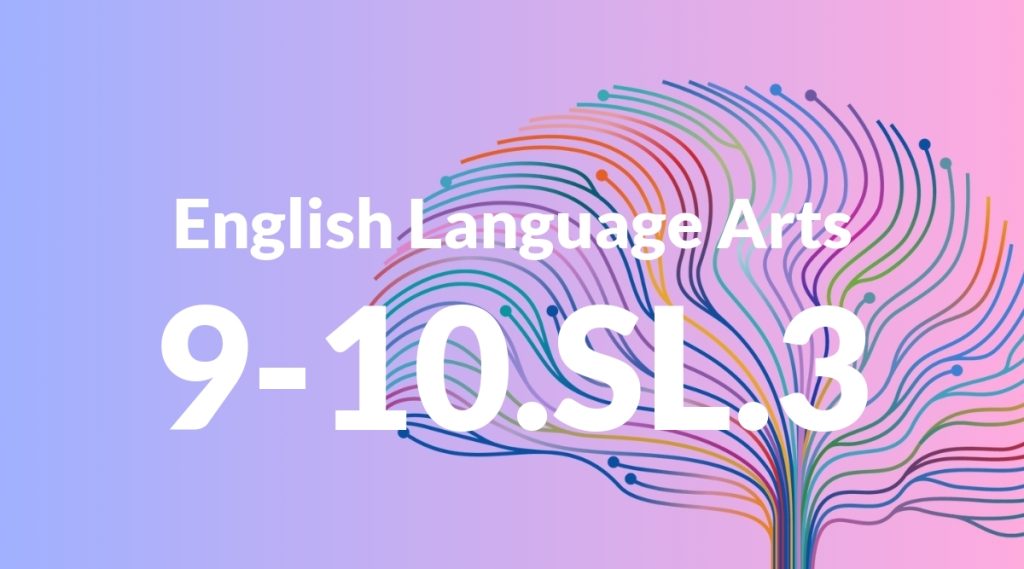Standard: 9-10.SL.3 – Evaluate a speaker’s point of view, reasoning, and use of evidence and rhetoric, identifying any fallacious reasoning or exaggerated or distorted evidence.
Grade level: Grade 9-10
Subject: English Language Arts
Domain: Speaking & Listening
Teacher Overview
This standard emphasizes the importance of critical listening skills in evaluating a speaker’s argument. It is crucial for students to discern the quality of reasoning and evidence presented, as well as to identify any logical fallacies or distortions. This skill is fundamental in fostering informed and critical thinkers who can navigate a world filled with diverse perspectives and information sources. Students should have a foundational understanding of logical reasoning, types of evidence, and rhetorical devices. They should also be able to listen to and summarize spoken texts accurately.
Mastering this standard will enable students to engage more critically with spoken and written texts. They will be better equipped to participate in debates, write persuasive essays, and analyze media content critically, which are essential skills for academic success and informed citizenship.
Common Misconception 1
A common misconception is that all evidence presented by a speaker is equally credible. This is incorrect because different types of evidence have varying levels of reliability and validity. For instance, anecdotal evidence is often less reliable than statistical data.
Intervention 1
An effective intervention is to provide students with examples of different types of evidence and guide them in evaluating the credibility of each. This can be done through activities like comparing anecdotal stories to statistical reports on the same topic.
Common Misconception 2
Another misconception is that persuasive language always indicates a strong argument. This is not true because rhetorical devices can be used to make weak arguments appear stronger than they are. Students need to learn to look beyond the persuasive language and evaluate the actual content of the argument.
Intervention 2
To address this, teachers can use examples of speeches or advertisements that use rhetorical devices. Students can be tasked with identifying these devices and discussing whether they contribute to a logically sound argument.
Prerequisite Knowledge
Students should understand basic concepts of logical reasoning, types of evidence, and rhetorical devices. They should also have experience in listening to and summarizing spoken texts.
Subsequent Knowledge
After mastering this standard, students will be able to engage more critically with spoken and written texts, enhancing their ability to participate in debates, write persuasive essays, and analyze media critically.
Instructional Activities
- Conducting debates on current events and evaluating arguments
- Analyzing political speeches for logical fallacies and rhetorical devices
- Creating presentations critiquing advertisements
- Writing essays evaluating the credibility of news sources




